within a historic quarter of beijing, archstudio has completed the renovation of a small siheyuan and its adjoining three courtyards to create a living space that blends traditional architecture with contemporary design. the project has been appropriately named ‘qishe’ (‘qi’ and ‘she’ refers to ‘seven’ and ‘house’ in chinese respectively), as the development is number 7 on the hutong and it originally consisted of 7 pitched-roofed buildings.
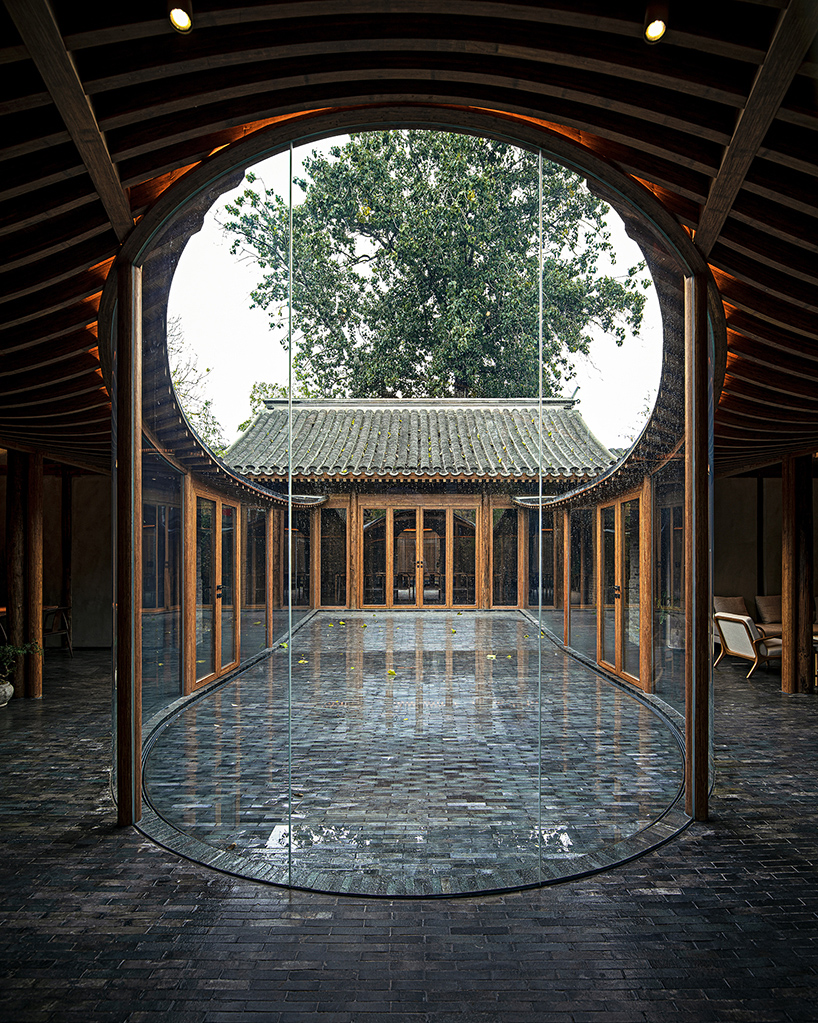
central courtyard entrance, image © wang ning
before the renovation project by archstudio, the existing building was in disrepair. the basic timber beams and some arched door openings were relatively well preserved, yet most of the roofs, walls, doors and windows were badly damaged or missing. in the three courtyards, there were many temporary structures that had been inserted over the years. after demolishing these, the yards were filled with waste construction materials and overgrown with weeds – presenting an overall bleak view.
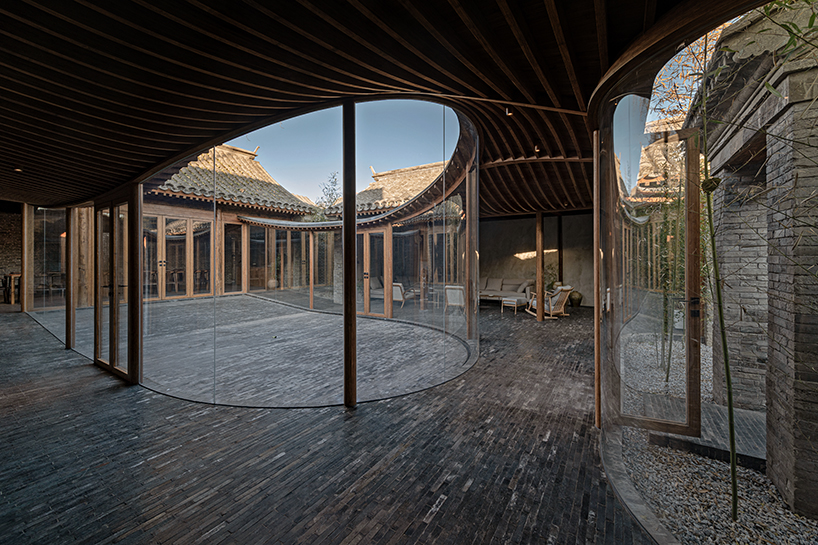
central courtyard, image © wang ning
when approaching the project, the design team set two goals: renovating the old and inserting the new. on one hand, the designers neatened the houses, repaired all the building surfaces, and reinforced the structures, with a view to reproduce the appearance of the traditional siheyuan. on the other hand, they introduced new living facilities, such as bathroom, kitchen and garage, HVAC pipes and lines, as well as new veranda spaces. essentially, the old and new were integrated to create a more functional, unified living space.
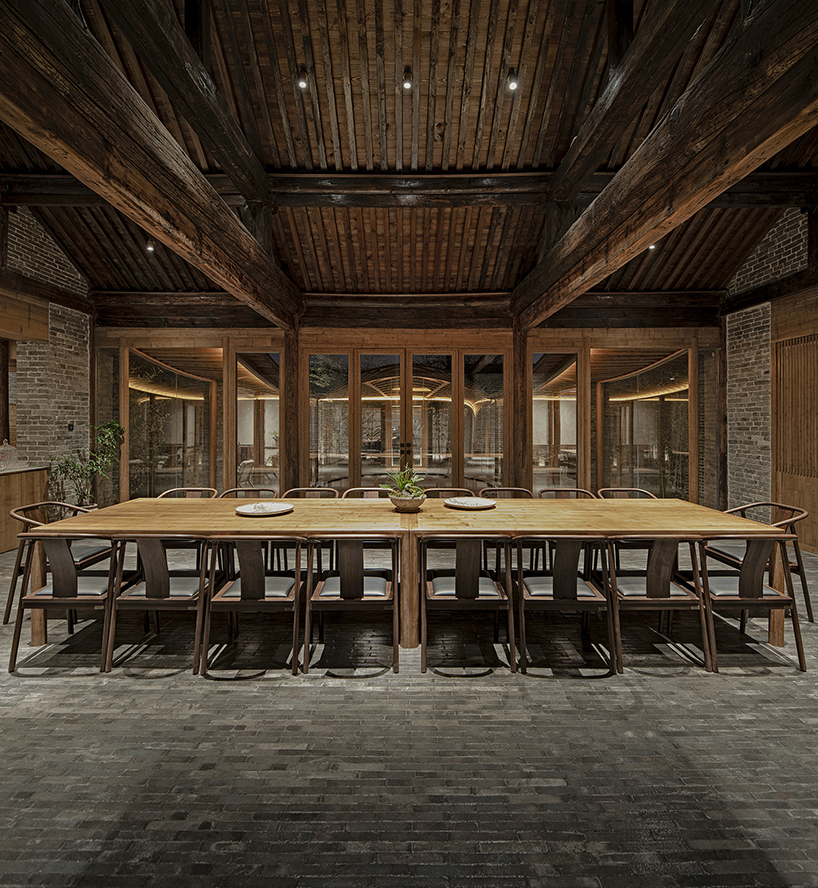
central courtyard dining room night view, image © wang ning
archstudio embedded a veranda – a basic element of traditional chinese architecture – into the old siheyuan to connect the seven separated pitched roofs. the veranda functions as a circulation route, reshaping the spatial pattern and layers, and providing a playful walking experience as well as impressive views.
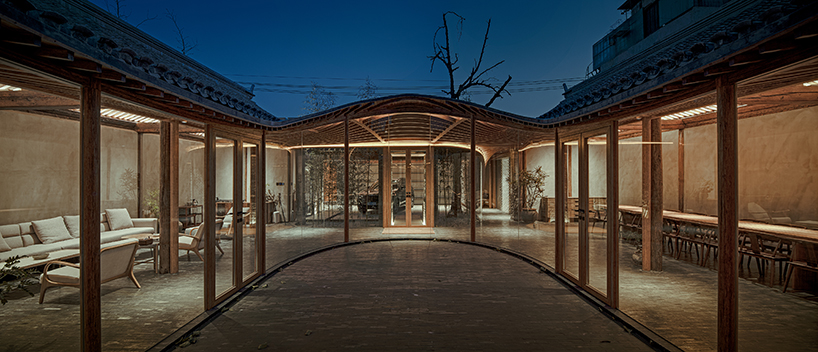
central courtyard night view, image © wang ning
the front courtyard is mainly used as a garage. archstudio retained its pitched roof, removed the front and back walls, and shifted the entrance door to the side, so as to leave more space for parking. the design team also restored and preserved many valuable historical elements, such as the gateway and carvings of the arched door opening, and even a tree. in addition, the wall between the front and middle courtyards was dismantled and replaced by a transparent veranda.
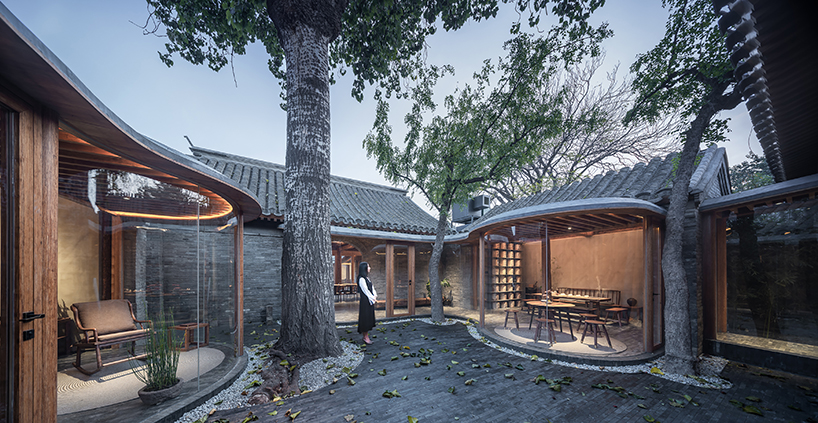
back courtyard tea room, image © wu qingshan
the middle courtyard is a public activity space. it previously contained three houses, one on the north and two on the sides. based on its original layout, archstudio set a living room, a tea room, a dining room and a kitchen in this area. the designers adopted a symmetrical layout, which inherits the sense of formality of traditional courtyard buildings. they also replaced the former stairs that led to houses with gentle slopes.
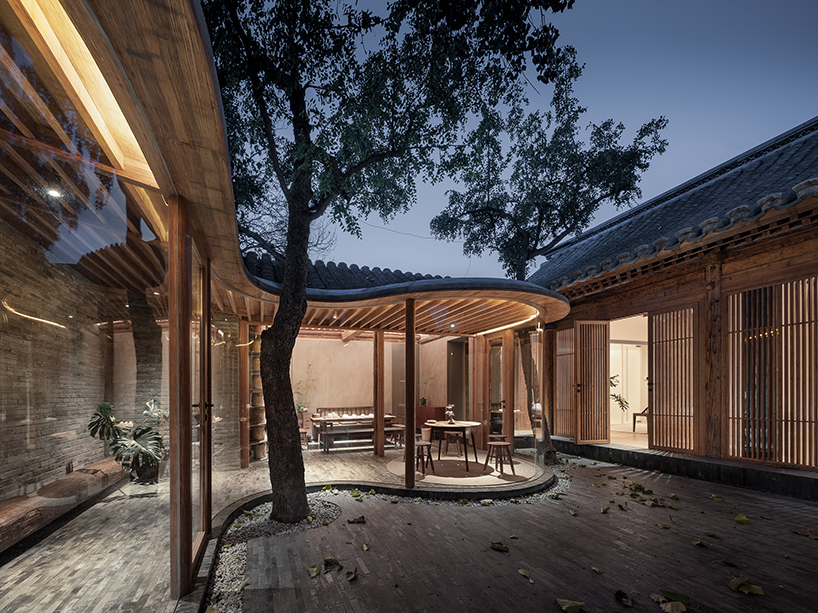
back courtyard, image © wu qingshan
the slopes and the transparent veranda together enhance the connectivity between the indoor spaces and the open courtyard. the dining room has a folding door, allowing the interior to be opened up completely to the outside space, effectively extending indoor activities to the courtyard. at the center of the dining rooms back wall, there is an arched door, which was restored and becomes the entrance to the back courtyard.

back courtyard master bedroom, image © wu qingshan
the back courtyard is a dwelling space, mainly consisting of two bedrooms, a tea room and a study. its original layout is the same as that of the central courtyard. the veranda in this area has an undulating plane, which interacts with the three old trees that already existed in the courtyard and at the same time forms several small arc-shaped leisure spaces. the bedrooms are set at the furthermost point, and include en-suite bathrooms, which are positioned adjacent to a small yard to ensure ample light and ventilation.
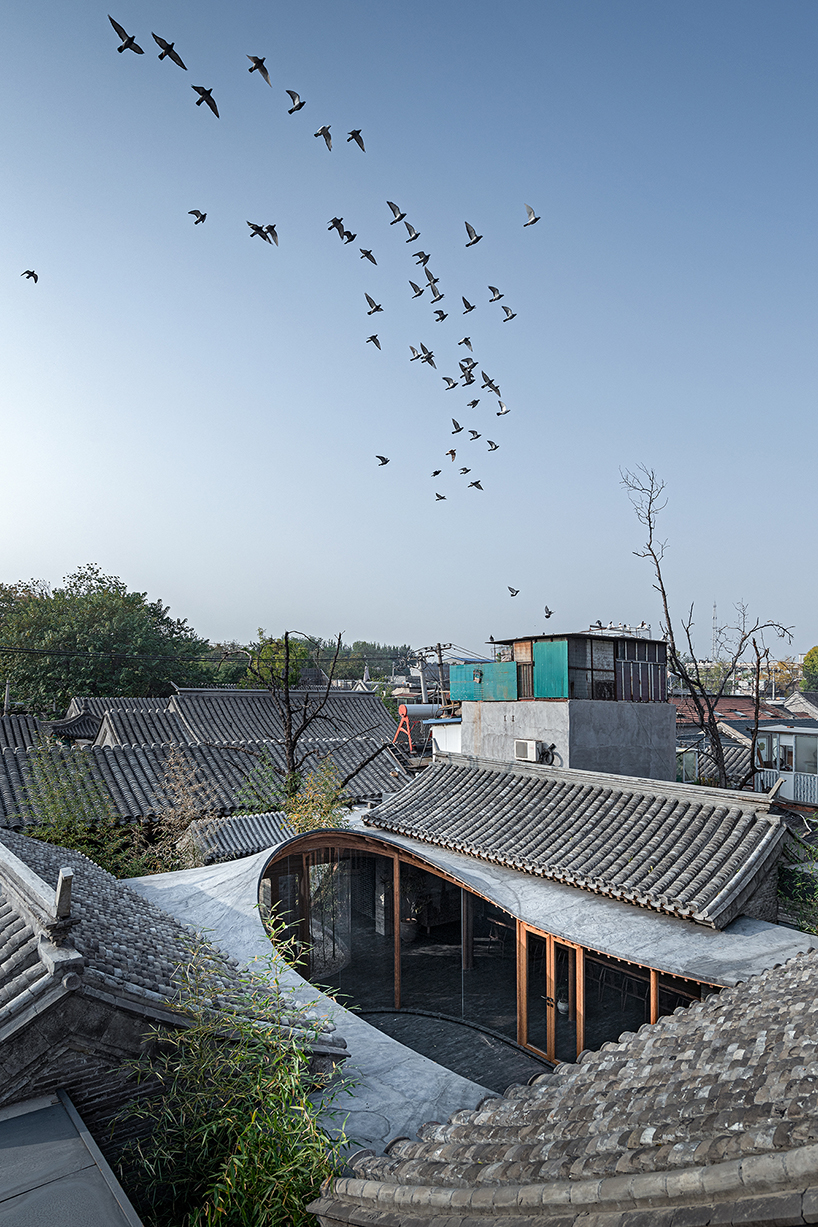
overall aerial view, image © wang ning
the material scheme preserves the textures of the traditional architectural materials whilst adding some new ones. the original pine wood framework of the siheyuan was maintained, with its damaged components replaced by the same material. the new veranda, doors, windows and some furniture utilize laminated bamboo panels, which echo the old pine. the newly built veranda adopts a frame structure, with ribbed beams and panels on the ceiling, in order to maximize transparency and lightness as well as to better blend into the old construction. as for interior design, archstudio brought in various combinations of furniture made from old or new wood, which perfectly fuses different hues and textures.
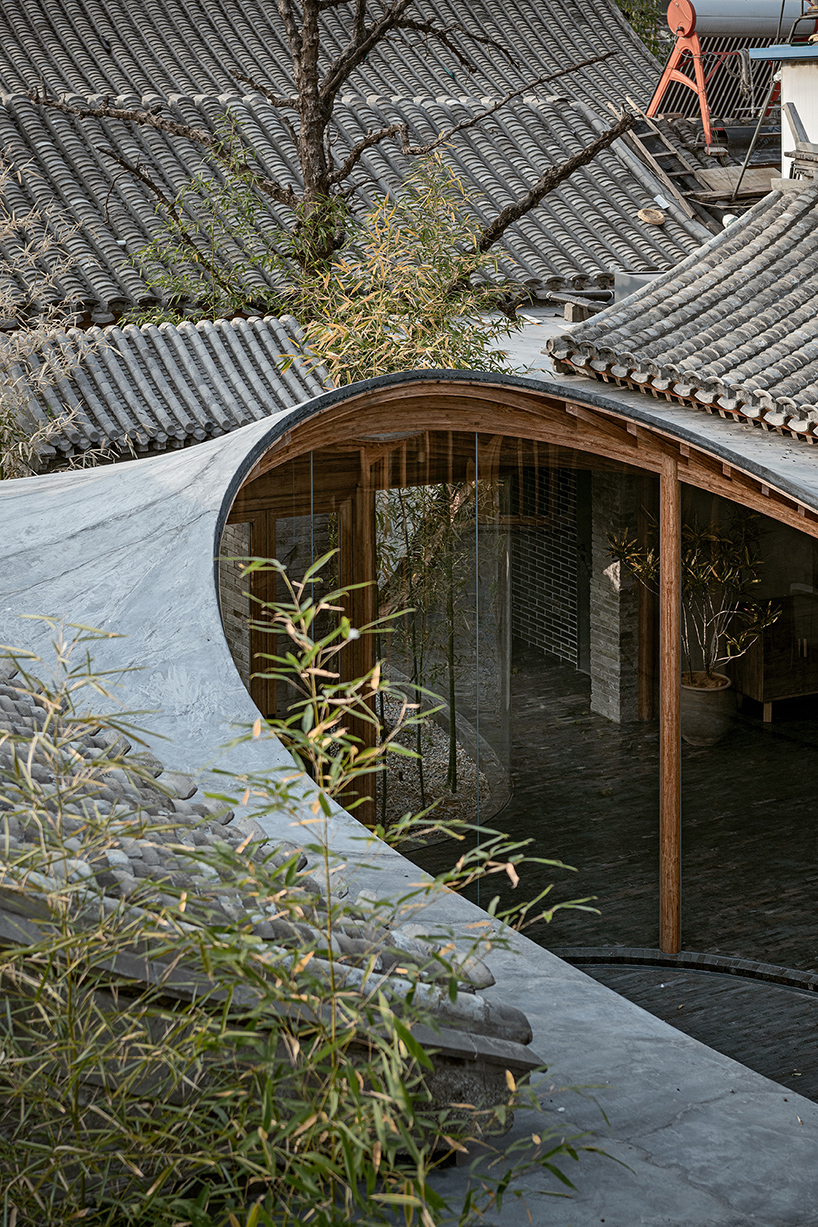
detail of the junction between roofs, image © wang ning
the traditional pitched roofs used no modern waterproof materials and had poor thermal insulation. considering this, archstudio optimized the roofing system and performance on the premise of retaining the original grey tile rooftops. as to the curved roof of the newly built veranda, the designers utilized polymer mortar as the finish, which is smooth and contrasts with the adjacent textured tile rooftops.
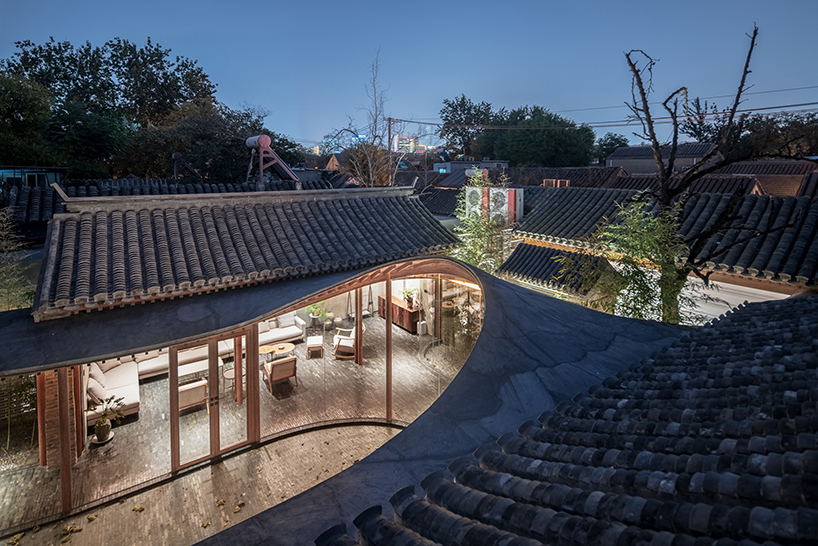
overall aerial view, image © wu qingshan
the old building walls were restored by reusing the grey bricks from the demolished temporary structures in the courtyards. the floor of the outdoor spaces is paved with the same type of brick, to ensure visual consistency. some of the new walls are formed by glass bricks, which have the same size as the old grey bricks. during construction, some stone slices, crocks and a millstone were found unexpectedly, which were later reused as stairs, flowerpots and adornments. the timber beam waste from the architectural renovation was also utilized to make chairs, breathing new life into spent materials.
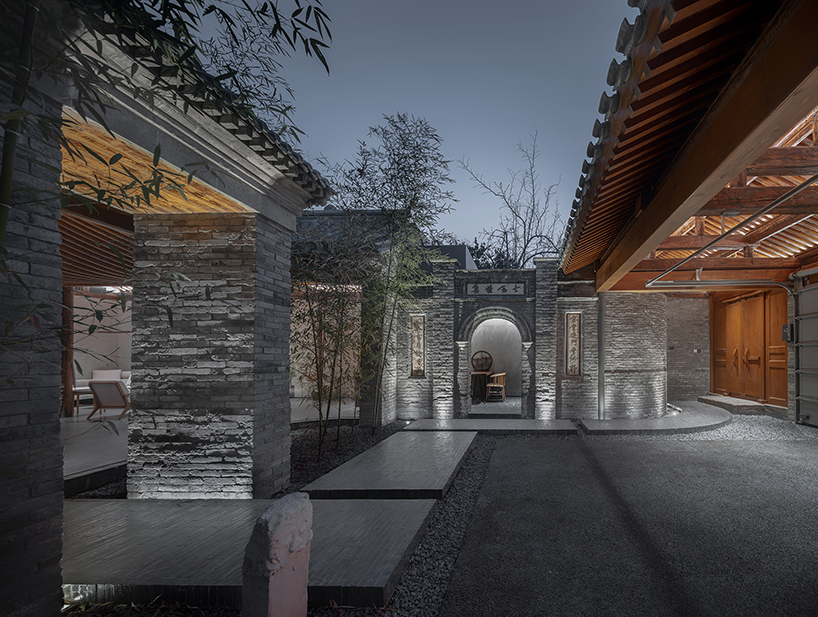
front courtyard night view © wu qingshan
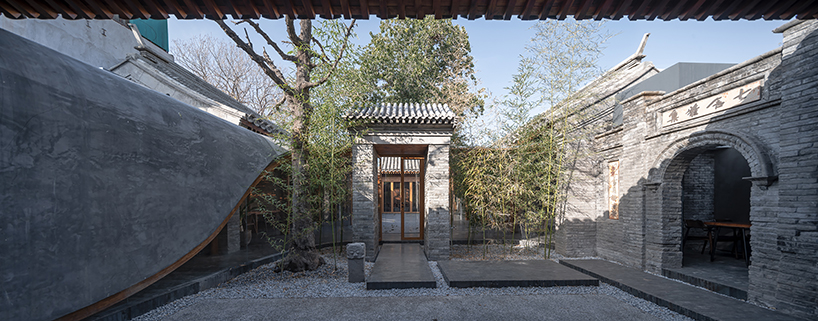
front courtyard view, image © wu qingshan
project info:
project name: qishe courtyard
project location: beijing, china
design firm: archstudio
chief designer: han wenqiang
project designer: wang tonghui
structural consulting: zhang yong, bamboo era
mechanical & electrical consulting: zheng baowei, yu yan, li dongjie
lighting consulting: dong tianhua
plant consulting: zhang xiaoguang
image editing: wang tonghui, wen chenhan
construction team: chen weixing, bamboo era, etc.
project area: approximately 500 m2 (5382 ft2)
project period: september 2017 – january 2020
main materials: laminated bamboo panel, gray tile, glass brick
photography: wang ning, wu qingshan
video: wang ning
designboom has received this project from our ‘DIY submissions‘ feature, where we welcome our readers to submit their own work for publication. see more project submissions from our readers here.
edited by: lynne myers | designboom
"traditional" - Google News
January 09, 2020 at 09:04AM
https://ift.tt/2QC95kf
archstudio fuses old with new to renovate a traditional siheyuan residence in beijing - Designboom
"traditional" - Google News
https://ift.tt/36u1SIt
Shoes Man Tutorial
Pos News Update
Meme Update
Korean Entertainment News
Japan News Update
Bagikan Berita Ini














0 Response to "archstudio fuses old with new to renovate a traditional siheyuan residence in beijing - Designboom"
Post a Comment